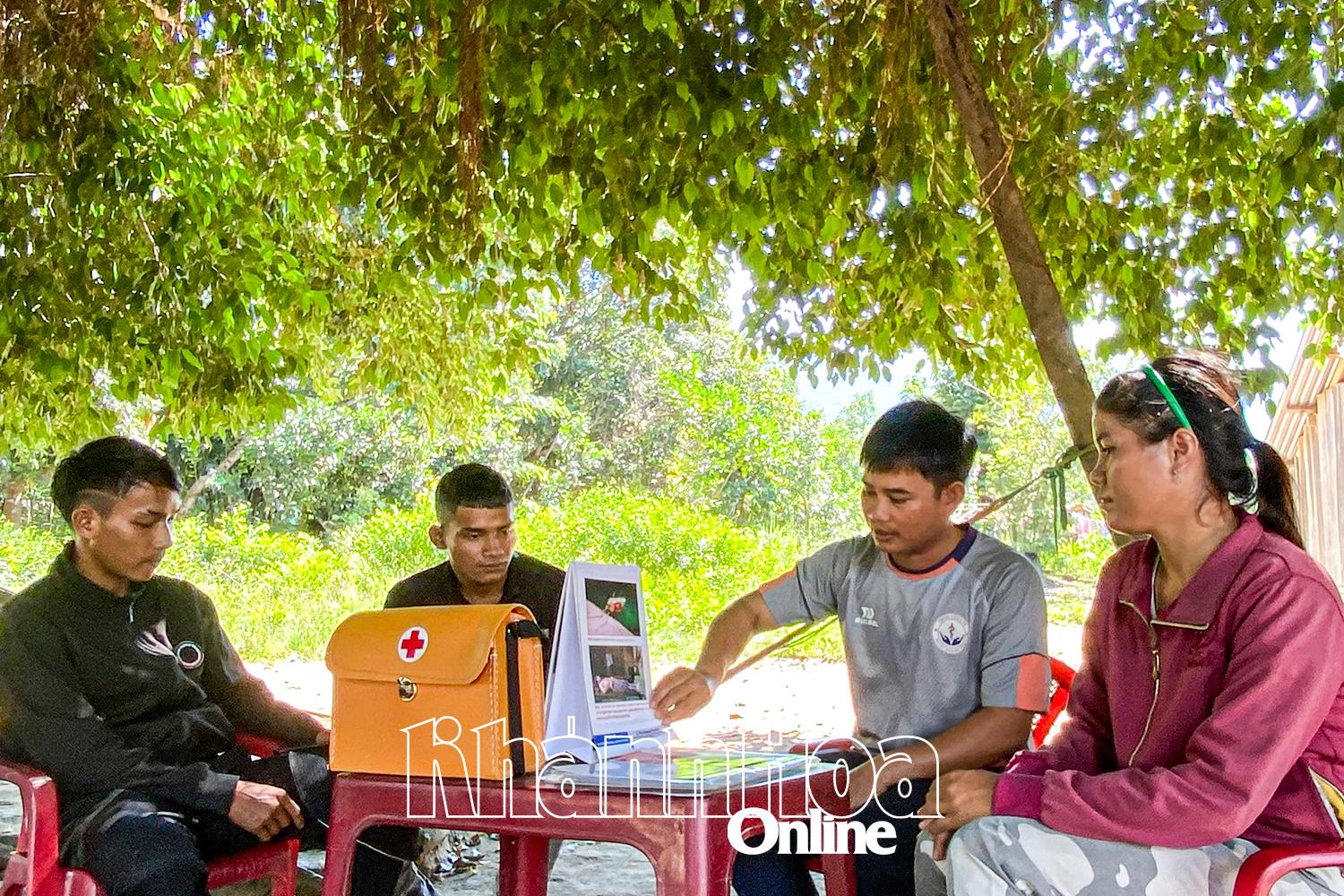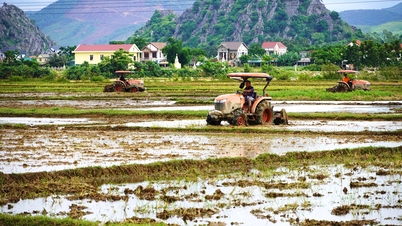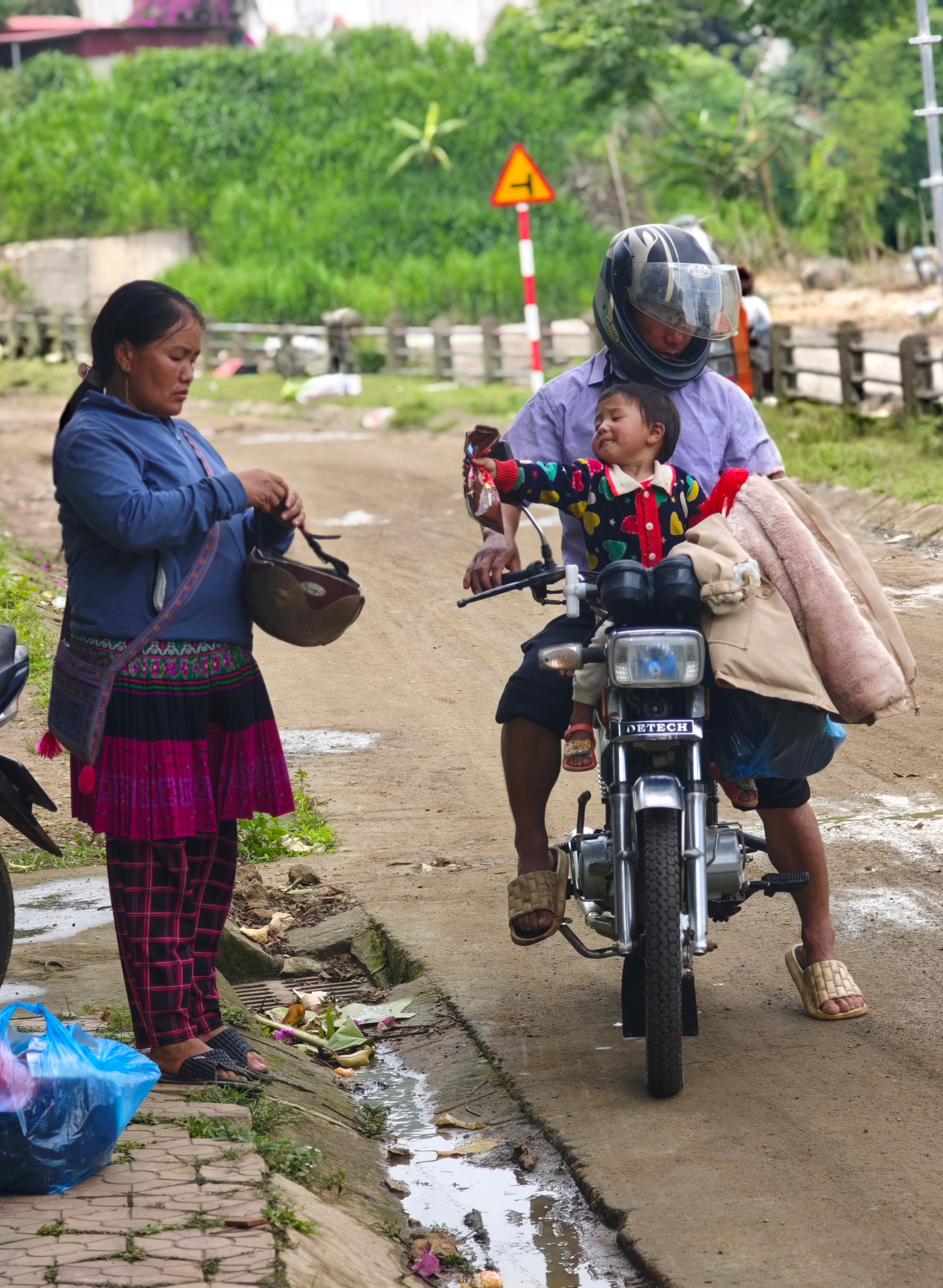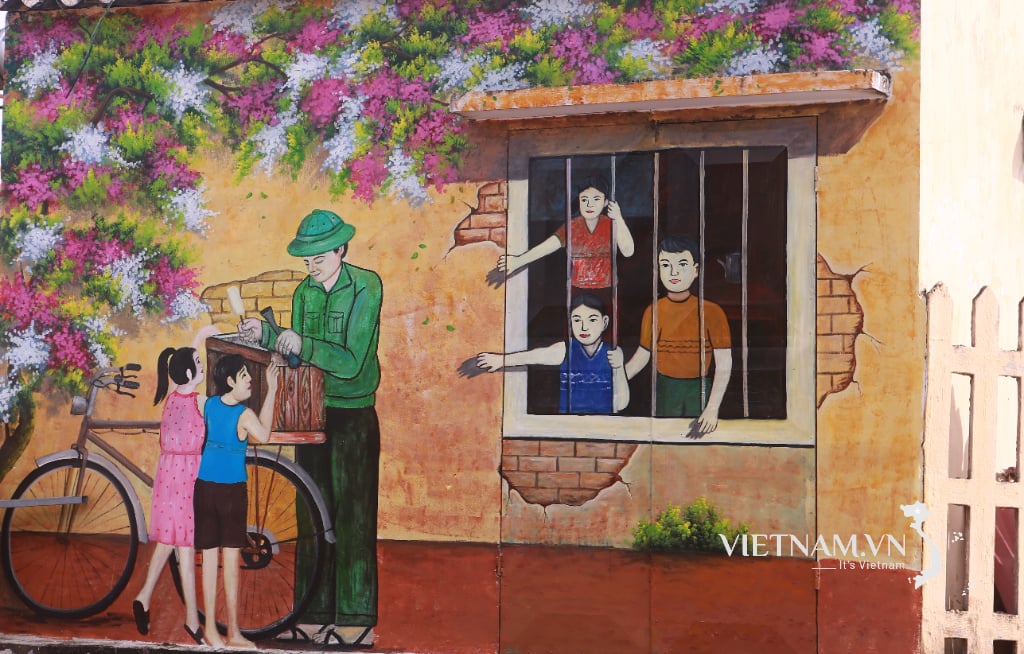Cut off the source of infection
According to information from the provincial Center for Disease Control, since the beginning of the year, the total number of malaria cases in the province has been 11; all cases were detected and treated promptly, with no deaths due to malaria. Of the malaria cases, 10 were recorded in Khanh Vinh district, 1 case was a resident of Dak Lak province, detected in Ninh Hoa town. Compared to the same period last year, the number of cases decreased by 91% (122 cases). Many communes that were previously key areas for malaria in Khanh Vinh district now have no cases or only record 1 to 2 cases every few months.
Village health workers communicate about malaria to people in Khanh Vinh district. |
In 2024, Khanh Hoa province was the locality with the highest number of malaria cases in the country with 199 cases, an average of 16 cases per month. Determined to reduce the number of malaria cases, the health sector and local authorities identified the most important task as screening and cutting off the source of disease transmission. Therefore, people who go to the forest, people who sleep in huts to guard the fields, workers working in areas close to the forest, etc. are identified as high-risk subjects. Implementing the direction of the Provincial People's Committee, by the end of 2024, 100% of communes and towns in Khanh Vinh district had reviewed and updated the list of subjects who regularly go to the forest and fields with more than 1,380 people; established shock troops in 14 communes and towns. Particularly in 3 communes with high numbers of malaria cases, namely Khanh Thuong, Khanh Dong, Khanh Phu, the locality has set up 10 checkpoints at the forest entrance to manage and screen high-risk subjects. At the same time, proactively screen and take blood samples to detect cases and provide early treatment. Along with that, the authorities of communes and towns manage the number of people working at forest purchasing and exploitation facilities, and laborers at construction sites near forests to encourage them to get tested for malaria regularly. In some cases, medical staff went to the edge of the forest to take samples for testing.
Doctor Ton That Toan - Deputy Director in charge of the Provincial Center for Disease Control said: "Thanks to continuous screening and testing, malaria cases are detected very early by the health sector and treated immediately. At the same time, people are encouraged to sleep under mosquito nets and apply mosquito repellent to prevent mosquito bites that transmit the disease."
Combining multiple solutions
The provincial Center for Disease Control has proactively deployed epidemiological and vector surveillance in the following localities: Khanh Hiep, Khanh Dong, Khanh Thuong (Khanh Vinh district), Son Tan (Cam Lam district) with a total of more than 3,600 blood samples collected for testing; malaria insect investigation collected 10 species of Anopheles mosquitoes, of which the main disease vector An. Dirus (Khanh Hiep commune) was caught. At the same time, thousands of households were treated with mosquito nets and sprayed with chemicals; 500 mosquito nets were distributed to high-risk groups in the localities of Khanh Vinh district; more than 95% of people going to the forest and sleeping in the fields were encouraged to use mosquito nets treated with chemicals, apply mosquito repellent cream, etc. To support localities in blocking the source of malaria transmission, the Quy Nhon Institute of Malaria - Parasitology - Entomology sent 3 working groups to Khanh Hoa to screen and test the source of transmission.
Doctor Ton That Toan said: “The work of preventing and controlling malaria has achieved high efficiency thanks to the attention and direction of the Provincial People's Committee, the Department of Health; the support of the Quy Nhon Institute of Malaria - Parasitology - Entomology on malaria prevention and control in the area. Along with that is the timely medical information system between levels; the work of investigating and monitoring malaria epidemics is actively carried out from the provincial level to the grassroots level... However, this work still faces difficulties because the key malaria areas are ethnic minority areas, economic life is still difficult, people's work is often associated with slash-and-burn farming, exploiting forest products in the forest, where malaria is prevalent, so they are susceptible to malaria; mobile subjects (mainly people going to the forest and fields) in localities to areas where malaria is prevalent are very difficult to control. For the work of preventing, controlling and eliminating malaria to be sustainable and stable, there needs to be more attention from authorities at all levels, departments, branches, organizations and people. Work Communication needs to continue to be promoted, focusing on communication so that people can proactively screen for testing, especially when returning from the forest or fields with a fever, people need to immediately go to medical facilities to get tested.
From now until the end of the year, the health sector will continue to monitor the malaria situation in localities, proactively organize epidemiological surveillance, and monitor malaria vectors in key communes of Khanh Vinh district. At the same time, train medical units in the whole province to examine malaria bacteria under a microscope; direct localities to increase blood sampling for malaria testing; communicate health education on malaria prevention and control; implement activities of projects supporting the malaria program...
Malaria is a disease caused by the Plasmodium parasite with symptoms of fever, chills, headache, nausea, vomiting, and diarrhea. The disease is mainly transmitted through the blood, by the bite of Anopheles mosquitoes carrying the parasite. When Anopheles mosquitoes suck the blood of a sick person, they carry the pathogen and bite healthy people and transmit the parasite to healthy people. With proper treatment, people with malaria can fully recover. However, severe malaria can cause many dangerous complications such as: organ failure, pulmonary edema, cerebral malaria can cause coma, convulsions and death...
C.DAN
Source: https://baokhanhhoa.vn/xa-hoi/y-te-suc-khoe/202506/so-ca-mac-sot-ret-giam-sau-d984859/



























































































Comment (0)